Voodoo Envy M:855 Part 1 - Athlon 64 DTR and Mobility Radeon 9600 Pro
by Andrew Ku on November 4, 2003 5:45 PM EST- Posted in
- Laptops
Splinter Cell IQ - 1_1_2Tbilisi
Splinter Cell has three codepaths: Class 2, Class 1, and Class 0. ATI’s Rxx and R3xx use the Class 1 codepath, while NVIDIA’s NV2x and NV3x use the Class 2 codepath.
Class 2 Graphic Adaptors:
NV2x/NV3x chips
Dynamic Lighting system = Shadow Buffer
Vertex position modifiers = Yes
Light beams stopped by depth texturing = Yes
Pixel Shader effects/filters/water = Yes
Reflection/Details texturing/Specular = Yes
Class 1 Graphic Adaptors:
R2xx/R3xx/Parhelia/Xabre 200/Xabre 400/Xabre 600/chips/Creative P9
Dynamic Lighting system = Shadow Projector
Vertex position modifiers = No
Light beams stopped by depth texturing = No
Pixel Shader effects/filters/water = Yes
Reflection/Details texturing/Specular = Yes
This does means that some visual effects will be different between the two hardware solutions, as the codepaths are different. Class 2 graphic adapters can run as Class 2, Class 1, and Class 0, while Class 1 graphic adapters can run as Class 1 and Class 0. Forced emulation is possible, but by default, the hardware will chose the appropriate codepath intended. We ran everything by default, which means that two different codepaths were used.
We originally believed that the Class 2 graphic adapters would output a possibly higher image quality then Class 1, due to the naming derivative. However, the image quality issue isn’t all black and white. Instead, we have found scenarios that seem support both sides of the spectrum.
The last pair of pictures shows a stark example between the two codepaths. NVIDIA’s GeForce FX Go5650 won’t show the explosion of the computer when shot at, while ATI’s Mobility Radeon 9600 and Mobility Radeon 9600 Pro will. This is concurrent in the desktop products, as well. So it seems that ATI’s hardware is doing more work in this scenario, despite still coming out well on top (even when considering the CPU scaling). Meanwhile, the pixel shader use seems to be a bit more smoothed out on NVIDIA hardware (the first and second pair of pictures), but we do have some reservations over the quality of the pixel shaders used. We will let you be the judge...
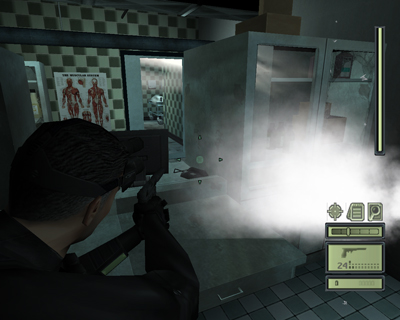
Click to enlarge.
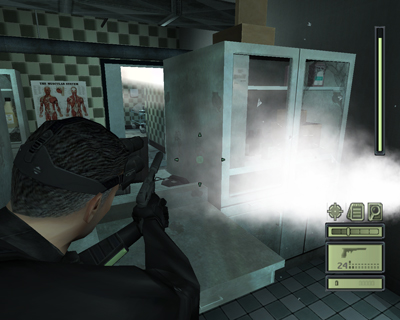
Click to enlarge.
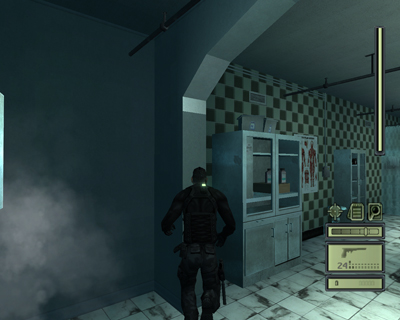
Click to enlarge.

Click to enlarge.
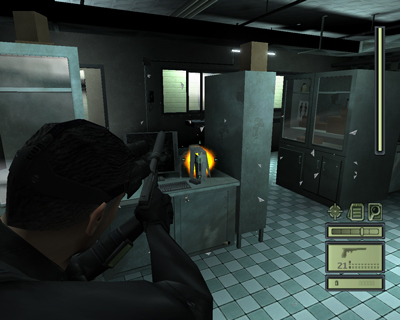
Click to enlarge.
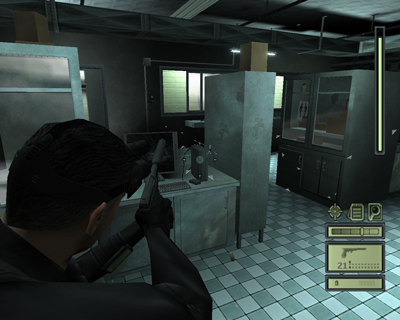
Click to enlarge.










24 Comments
View All Comments
Madcat207 - Tuesday, November 4, 2003 - link
No offence, but bad review.The Voodoo was put up against no real competition, so of course it won. Why did anandtech not bother with getting a Sager 5680 or 8890 to compare with, since those are P4 machines with real 9600 pros....
TheInvincibleMustard - Tuesday, November 4, 2003 - link
1) Is it hard to have the product in question (ie, the one being reviewed) highlighted in some way on the graphs? It can't be that hard to do the bar in red or whatever. Granted, when comparing the M10 to the Go5650, there's not as much sense, but when comparing 10 or so CPU's it'd sure be nice to quickly identify what stands where.2) Should the X2 performance scores with 4xAA/8xAF be taken with a grain of salt? Why does the M10 increase approx 25% going from 1024x768 to 1280x1024 ... ?
Adul - Tuesday, November 4, 2003 - link
The battery life performance will come in part 2 of this review.AlexWade - Tuesday, November 4, 2003 - link
Deat AT:What is the battery life on this notebook? I but notebooks based on battery life, not performence.